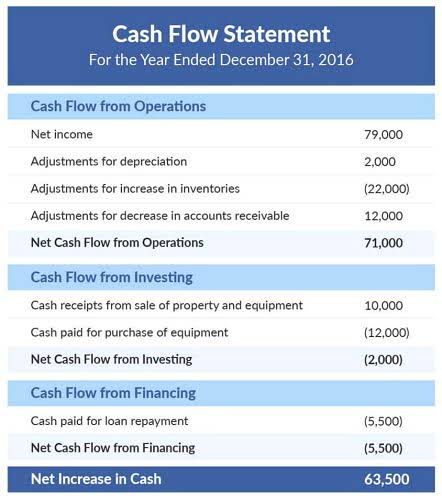Stage directions are essential elements in a script that provide instructions to actors, directors, and stage crew about the movements, actions, and positioning of characters on stage. These directions play a crucial role in bringing the script to life, allowing the audience to visualize and understand the story being told. One common stage direction that often arises is the indication for a character to leave the stage. In this article, we will explore the various stage directions that instruct a character to exit and delve into the reasons behind their usage. In conclusion, stage directions are crucial for guiding characters’ movements and actions on stage, including their exits.
House
- A playwright adds these instructions as guidelines to help shape a performance, but ultimately, the final say rests with the actors and director.
- This exercise will help you recognize and comprehend the idiomatic expression more effectively.
- One such term is “stage right.” This idiom refers to a specific area on stage, but its meaning goes beyond just physical location.
- Understanding these cultural nuances can help us better appreciate and interpret idioms within their respective contexts.
Stage Directors, choreographers, designers and technical staff also use these terms almost exclusively. Stage Left and Stage Right are simple and always from the point of view of the performer. When a performer addresses the audience directly, Stage Right is to the performer’s right, and Stage Left to their left. Performers, technicians, and really everyone immersed in this work know this reflexively. Personally, I can’t often recall the direction of north in a windowless theatre, but I know where to find Stage Right, with my eyes closed.
An Actor’s Guide to Stage Directions
„Upstage“ refers to the section of the stage that was higher, while „downstage“ refers to the area that was lower. Stage directions are instructions in the script of a play that tell actors how to enter, where to stand, when to move, and so on. There are different types of theatres, but they all have three major parts in common. Theatres are divided into two main sections, the house and the stage; there is also a backstage area in many theatres.
Read articles or books that contain examples of the idiom “stage right”. Highlight or underline each instance of its usage and try to understand its meaning within each context. This exercise will help you recognize and comprehend the idiomatic expression more effectively. Center stage can also be used effectively for comic effect.
Your Guide to Stage Locations and Terms
Comedic scenes placed center stage make use of the spectators‘ unified perspective to time laughs and punchlines in a very focused way. Comedic entrances, exits, and bits crafted for the center stage space reach the entirety of the audience for maximum comedic impact. On the other hand, an antonym for “stage right” would be “stage left.” This term refers to the area of the stage that is on the audience’s right side when facing it.
Common Mistakes to Avoid When Using the Idiom “stage right”
In minimalist productions, where the focus is on simplicity and suggestion, stage directions may be reduced or removed, relying more on the actors’ movements and the audience’s imagination. Stage directions date back to early theater traditions, particularly in Shakespearean and Elizabethan times. Back then, theaters had a thrust stage that extended into the audience, requiring clear navigation cues for actors and stagehands. The terms „stage right“ and „stage left“ became standard as theater productions grew more elaborate and required precise coordination. Write short stories or paragraphs that include instances of the phrase “stage right”. Try using it in different ways such as describing a character’s movement on stage or explaining a scene transition.
Roy Roberts House of Wax
It’s important to note that while these terms may seem straightforward, they can vary depending on cultural differences in theater traditions. One synonym for “stage right” is “house left.” This term refers to the area of the stage that is on the audience’s left side when facing it. Another synonym is “upstage right,” which refers to the area of the stage that is furthest away from the audience on their right side. These terms are often used interchangeably with “stage right” depending on the context. When actors are positioned upstage, they appear farther away from the audience. Upstage and downstage derive their names from the older tradition of raked theater stages that sloped downward towards the audience.
Imagine a network of ropes, pulleys, and counterweights that allow stagehands to move set pieces, curtains, and stage left or right meaning lights up and down with ease. The areas of a theatre that are not part of the house or stage are considered part of backstage. These areas include dressing rooms, green rooms, offstage areas (i.e. wings), cross-overs, fly rails or linesets, dimmer rooms, shops and storage areas. To fully understand the nuances of this idiom, it is important to look at its history and context. By doing so, we can gain a deeper appreciation for its significance and relevance in modern language.
So, stage right and stage left are the actor’s right and left, not the audience’s. For musicians, understanding stage directions is essential for a smooth performance. So theatre people invented special terms to clear up the confusion. “Stage right” and “stage left” indicate the point of view of the performer standing in front of an audience.
One of the first things every actor needs to learn is what stage directions mean, why they exist, and how to interpret them. The center of the stage, also known as center stage, is considered the optimal acting space and focus point of the stage. Because of its central position, any action that occurs in the center stage area is prominently highlighted and visible to the entire audience. The house can refer to any area which is not considered playing space or backstage area. Outside the theatre itself this includes the lobby, coat check, ticketing counters, and restrooms. More specifically, the house refers to any area in the theatre where the audience is seated.
- Someone might say they are going “stage right” with their career choices or personal life plans, indicating that they are moving forward with purpose and direction.
- Each area of the stage will draw the audience’s attention and give one actor more significance just by where he or she is standing.
- Speaking of which, the other main terms are upstage and downstage.
- However, this idiom has also been adapted into everyday language.
If you’ve ever been to a musical or an opera, you might have noticed that the musicians seem to be playing from somewhere hidden. Well, that’s the orchestra pit—a recessed area between the stage and the audience where musicians and conductors do their thing.
Moments like that taught me to always double-check positioning before a performance. It seems easy enough, but the confusion often arises when communicating with crew members, venue staff, or other performers who may use the audience’s perspective instead. That’s why it’s crucial to clarify whether instructions are from the performer’s or audience’s viewpoint. Another variation of this idiom is using it as a metaphor for making decisions or taking action. Someone might say they are going “stage right” with their career choices or personal life plans, indicating that they are moving forward with purpose and direction.
However, this idiom has also been adapted into everyday language. For example, someone might say “he went stage right” to describe someone leaving quickly or discreetly from a room or situation. In this context, “stage right” implies an escape route or hiding place. Normally, you’d see sections like centre stage, upstage, downstage, stage left, and stage right.
This meant that actors could only enter and exit from one side, which became known as “stage right”. As theater evolved over time, this term continued to be used even when stages became more elaborate and allowed for entrances and exits from multiple sides. Can stage directions be altered or improvised by actors? While stage directions are typically followed as written, some degree of improvisation may be allowed during rehearsals or performances to enhance the characters and their actions.



